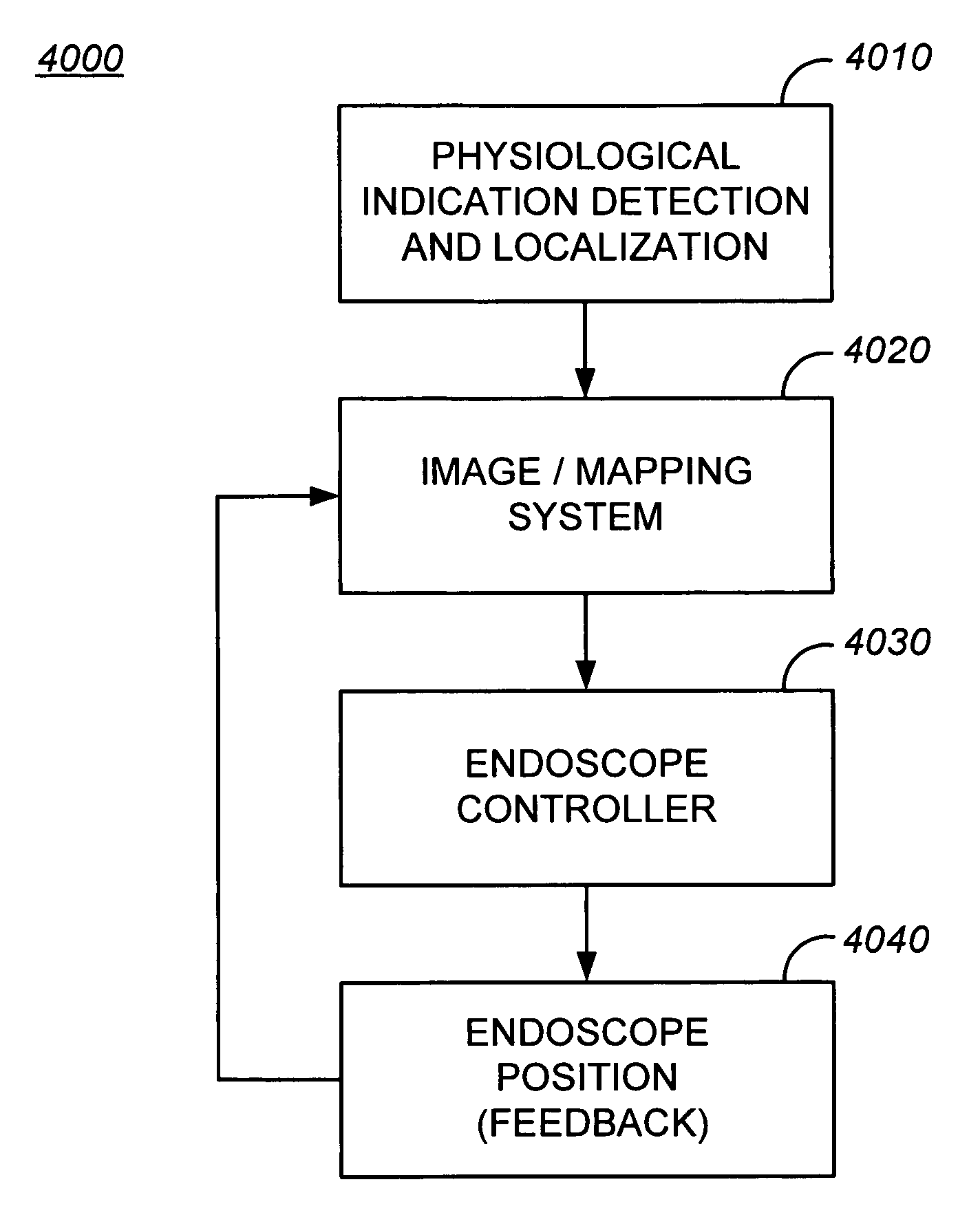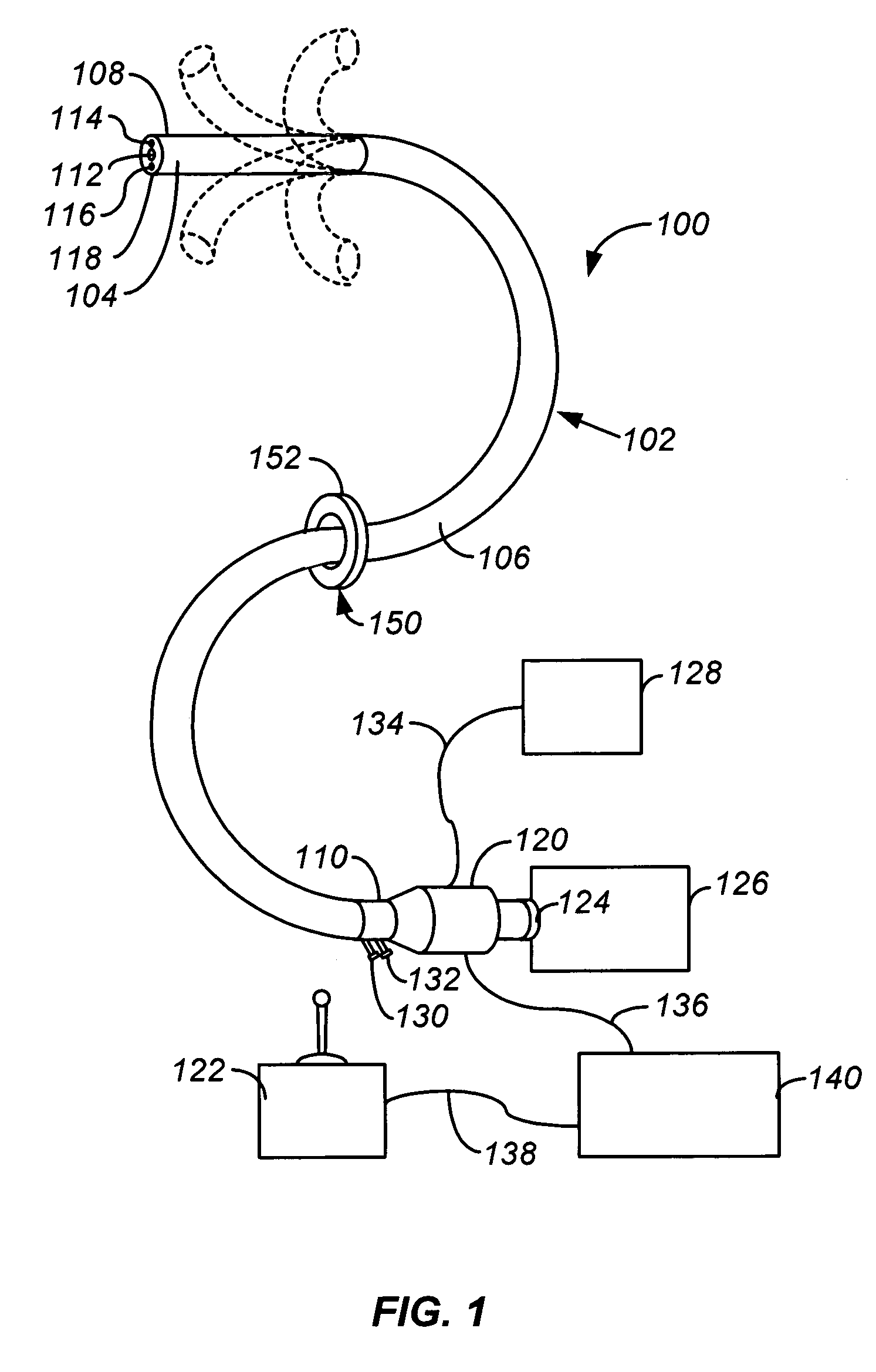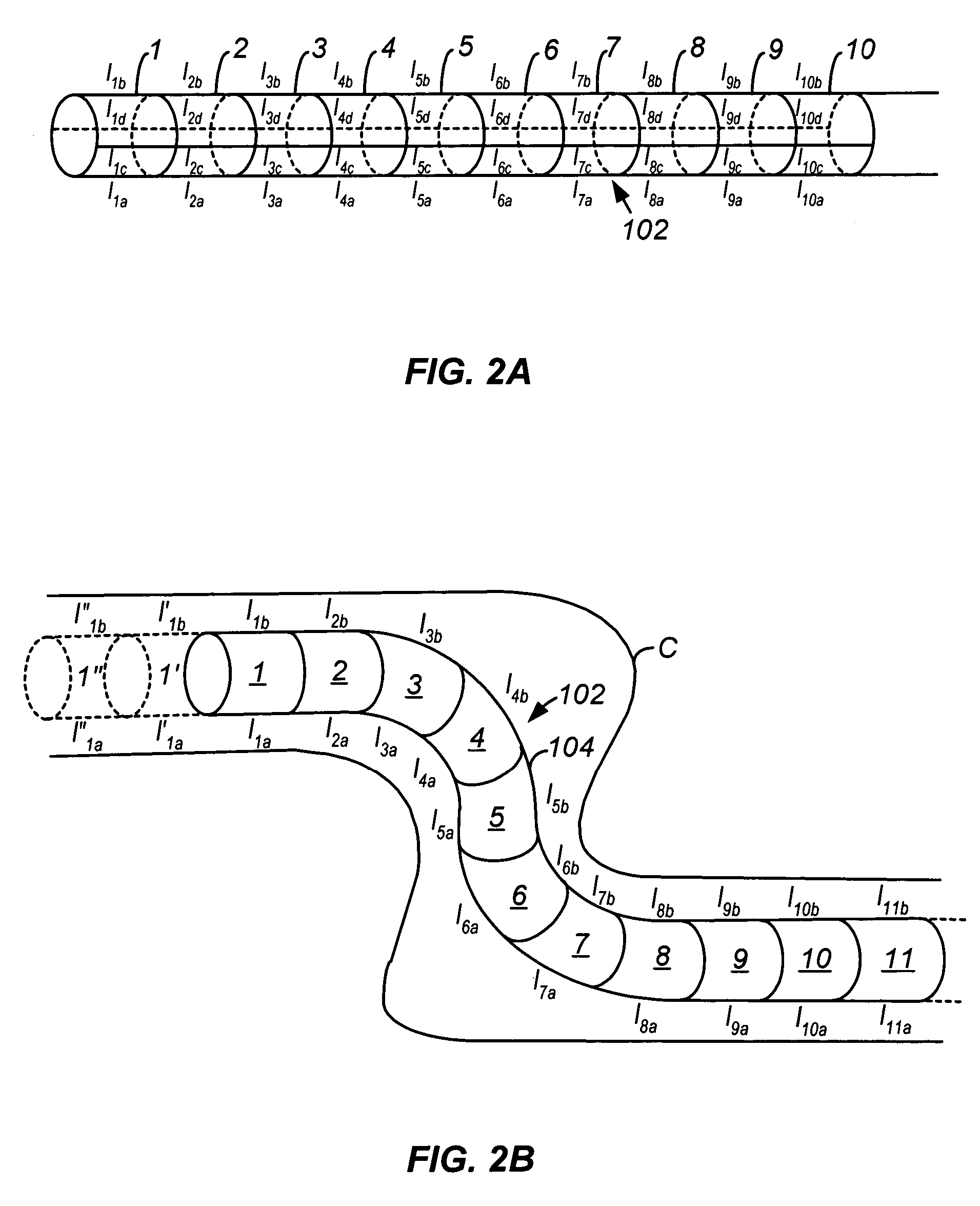Apparatus and methods for facilitating treatment of tissue via improved delivery of energy based and non-energy based modalities
a tissue and energy-based technology, applied in the field of endoscopes and endoscopic medical procedures, can solve the problems of increased mortality rates, high invasiveness and attendants with a great deal of risks, and significant morbidity, and achieve the effects of minimal invasiveness, accurate advancement, and minimal damage to healthy adjacent tissu
- Summary
- Abstract
- Description
- Claims
- Application Information
AI Technical Summary
Benefits of technology
Problems solved by technology
Method used
Image
Examples
Embodiment Construction
[0043]In treating various regions within the body, a number of different endoscopic devices may be utilized in facilitating access. Endoscopic devices which are particularly useful may include various endoscopes having a steerable distal portion and an automatically controlled proximal portion. Generally, the steerable distal portion may be controlled by a physician or surgeon to facilitate steering the device while the proximal portion may be automatically controlled by, e.g., a controller or computer. The steerable endoscope may be advanced within the body of the patient through a number of different methods. For instance, the endoscope may be introduced via any one of the natural orifices into the body such as through the anus. Alternatively, the device may be introduced percutaneously through a small incision into the body. Once the endoscopic device has been introduced into the body, it may be advanced and maneuvered, as described below, to avoid obstructing anatomical features...
PUM
 Login to View More
Login to View More Abstract
Description
Claims
Application Information
 Login to View More
Login to View More - R&D
- Intellectual Property
- Life Sciences
- Materials
- Tech Scout
- Unparalleled Data Quality
- Higher Quality Content
- 60% Fewer Hallucinations
Browse by: Latest US Patents, China's latest patents, Technical Efficacy Thesaurus, Application Domain, Technology Topic, Popular Technical Reports.
© 2025 PatSnap. All rights reserved.Legal|Privacy policy|Modern Slavery Act Transparency Statement|Sitemap|About US| Contact US: help@patsnap.com



